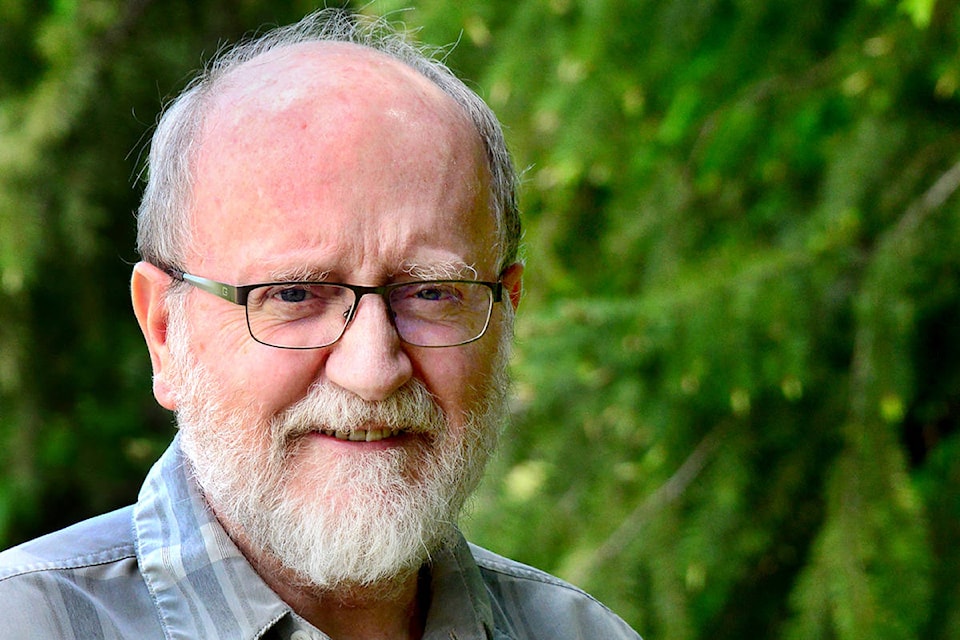This will be my last editorial as editor of the Clearwater Times. After nearly 30 years with the newspaper, it’s time to hang up my hat – or, at least, pass it on to someone else.
In my previous two editorials I’ve talked a bit about my past with the newspaper.
When looking at the future, however, I am concerned about this community I call home.
The main danger is, of course, climate change. The B.C. government recently produced a flood and wildfire review titled Addressing the New Normal: 21st Century Disaster Management in British Columbia.
The review, which was co-chaired by former BC Liberal cabinet minister George Abbott and Maureen Chapman, a hereditary chief of the Skahahlook First Nation, laid out 108 recommendations on how to deal with future flood and fire disasters similar to those this province faced last year.
This is all well and good except that, if climate change predictions are correct, then the floods and fires we saw last year (and are seeing the beginning of this year as well) are trivial in comparison to what we can expect to see later in this century.
The “new normal” is not the new normal because there will be no normal – everything will get worse, sometimes very quickly.
When it comes to disasters caused by climate change, we ain’t seen nothing yet.
For example, Mike Flanagan, professor of wildland fire at University of Alberta, recommends that communities in Canada’s forests have a two-kilometer wide buffer around them in which all conifer trees have been replaced with deciduous.
The recently released flood and fire review does not appear to contain any recommendations that radical, and yet Flanagan’s recommendation is likely the minimum that needs to be done (although there is some mention in the report of more silviculture-type treatments and more forest tenures around communities, similar to community forests).
During last summer’s wildfires, most people in this area evacuated when told to do so. A few chose to stay.
Whether to stay or go has been the subject of some study and debate, especially in Australia.
There, the experience in previous years was that most people who died in bushfires did so when caught in the open, whether in their cars or on foot.
That led to the development of a policy of prepare, stay and defend our property, or leave early.
In other words, “Stay or Go” – prepare your home and community for fire well in advance of an emergency, or leave before the emergency develops.
The worst of all possible options is delay – staying and trying to defend a property that is not adequately prepared, or not leaving until you need to escape through a wall of flames.
The Black Saturday bushfires in 2009 in the Australian state of Victoria killed 173 people. Of these, 113 died in their homes and another 27 just outside them.
Research showed that few of those who died had adequate fire plans. Fewer still had a Plan B to follow if Plan A did not work out.
Last summer saw the closure of Wells Gray Park due to wildfire concerns.
The closure appears to have been done prematurely and without adequate local consultation.
However, so long as we have hundreds or even thousands of tourists in the park with only one road as an exit, decision-makers are going to err on the side of caution when ordering an evacuation.
A bridge across the Clearwater River connecting with the Cariboo would offer an alternative escape route.
Other options might include construction of wildfire refuges in strategic locations such as Helmcken Falls and Clearwater Lake.
Possibly the best solution would be to combine the two approaches.
Controlling flood damage
Flood preparedness is another concern. The dyke along the North Thompson River in the Flats apparently was built in a hurry during a flood event in 1972. People went ahead and built it without getting any permits or title to the land.
READ MORE: Building the dyke in Back in Time (June 14, 2017)
It would be very much in the interest of all the property owners in the Flats for the matter to be resolved so the dyke can be strengthened and upgraded.
While on the subject of flood preparedness, mention should be made of the overflow pit with surrounding berm recently constructed near the corner of Park Drive and Robson Street.
A neighbor wrote a letter to the editor before it was built, saying he did not like the design. There were a few changes I wanted in the letter and the letter writer told me he didn’t care if I printed it or not.
I left it at that but now, every time I go by the pit and berm, I say to myself, “He was right.” I don’t like the design either.
If the berm fills with water and then collapses, the damage likely would be much greater than if there had been no berm.
No doubt the facility is engineered adequately for a worst case scenario in normal conditions but, as stated earlier, there will be no normal in the near future.
Meet the new editor
There will be an open house at the Times’ office on Friday. 1 – 4 p.m. Everyone is invited to drop by and meet the new editor, Jaime Polmateer.
READ MORE: New editor arrives (May 20, 2018)
newsroom@clearwatertimes.com
Like us on Facebook and follow us on Twitter
